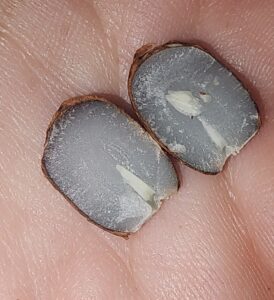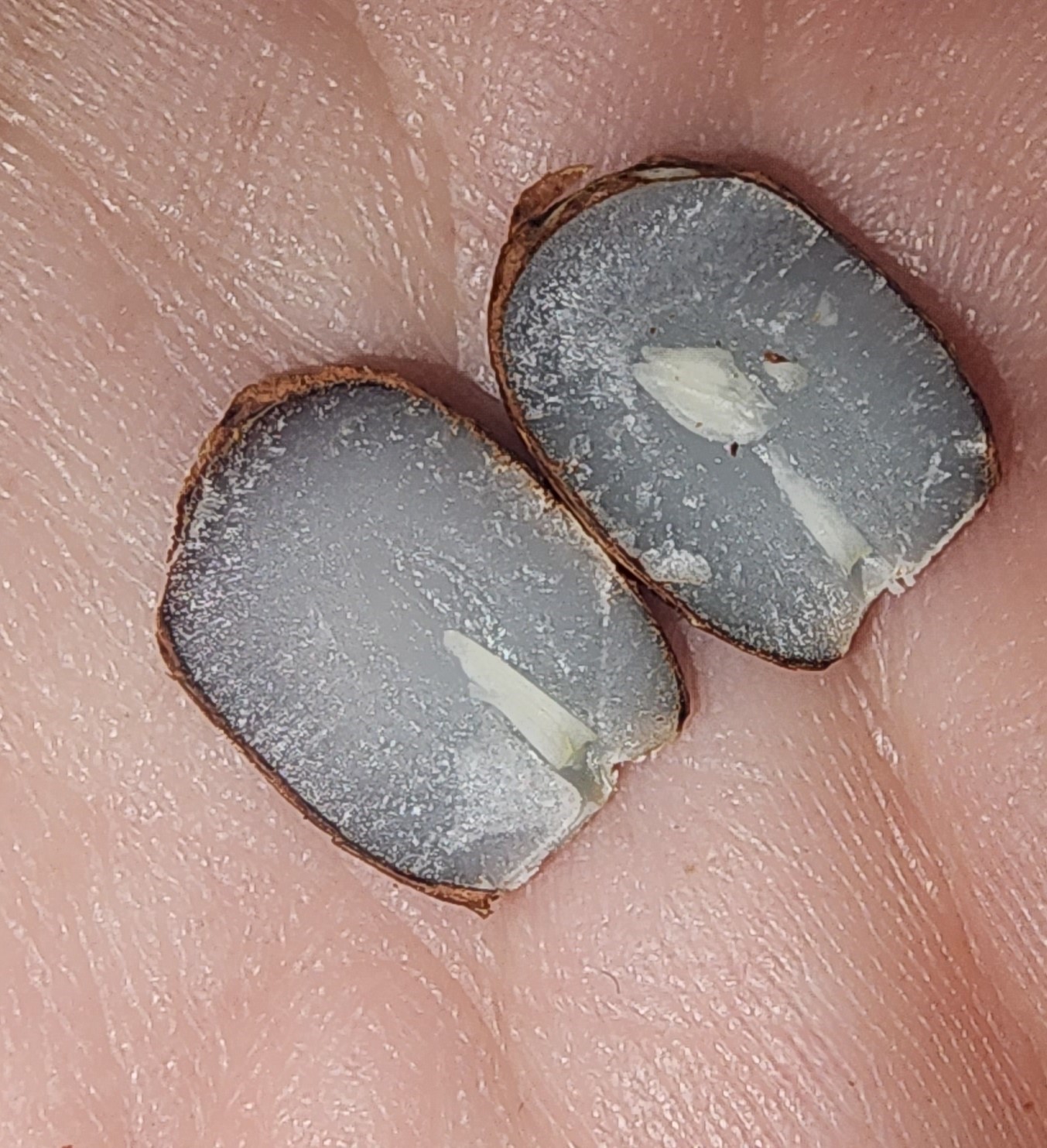How the Persimmon Seed Predicts the Weather
 A persimmon is a small orange fruit that is popular during the autumn. Although not as popular as peaches or plums, you can locate them at local farmers’ markets and some markets.
A persimmon is a small orange fruit that is popular during the autumn. Although not as popular as peaches or plums, you can locate them at local farmers’ markets and some markets.
The Diospyros virginiana, or American persimmon tree, grows in wild parts of the United States known as USDA Zones 4 – 9.
Legend tells it the persimmon fruit is often used as a way to predict the weather. It works by breaking open the fruit to expose the cotyledon or odd-shaped seed. The shape of this seed is how farmers predicted the upcoming winter.
How to Gather Healthy, Usable Persimmon Seeds
As time passes, the viability of the persimmon seed decreases; thus, it is imperative to collect them while fresh. Plucking the fruit straight off the tree is the best way to get usable, healthy seeds. You can display the dark-brown persimmon seeds by cutting the fruit into two equal halves using a sharpened knife. Once the fruit is cut in half, the dark-brown seeds are revealed; gently remove from the fruit to examine their shape.
These shapes of the persimmon seed are believed to forecast the following winter conditions:
- Fork-shape predicts mild winter conditions.
- Spoon-shape: think of the spoon as a shovel, meaning we will shovel lots of snow this winter.
- Knife-shape: The term “cuts like a knife” is why this shape forecasts harsh, biting cold weather this winter.
Where are the USDA Zones 4 through 9?
The first USDA Zone 4 is designated for plants that can handle extremely cold temperatures– anything from negative 30 to negative 20 Fahrenheit. States in this zone include North and South Dakota, Wyoming, Montana, Wisconsin, Minnesota, Maine, New Hampshire, and Northern New York.
USDA Zone 5 spans across the United States’ northern/central regions and includes parts of Iowa, Minnesota, Wisconsin, and Nebraska. It also expands the Northwestern states of Northern California, Idaho, Washington, Oregon, Wyoming, and Montana. Zone 5 also includes sections of Colorado, Alaska, and Nevada.
The United States USDA Zone 6 spreads throughout the south and midwestern regions. Including Georgia, Kentucky, Kansas, and Ohio, and the balmy Southwest areas of Utah, New Mexico, Colorado, and Arizona. Winding up in the Great Northwestern states of Oregon, Washington, and Montana. Certain areas in Alaska, New Hampshire, Massachusetts, and Maine are also in Zone 6.
The final USDA Zones are 7 through 9. These areas cover the southern regions of the United States, such as Mississippi, Georgia, and Alabama. Also included in this zone is southwestern California and New Mexico. It is these zones that the majority of gardeners reside in because of their low latitude.
The Persimmon Seed Forecast for Winter 2023-24
The upcoming winter of 2023-24 has been predicted to start off calm and mild. The persimmon seeds offer a deferment to the cold with the shapes of “fork-spoon-fork”. However, don’t let that fool you! The 2023-24 winter will wrap up as a spoon-knife-spoon-knife season–meaning a lot of snow and harsh, biting-cold conditions.

